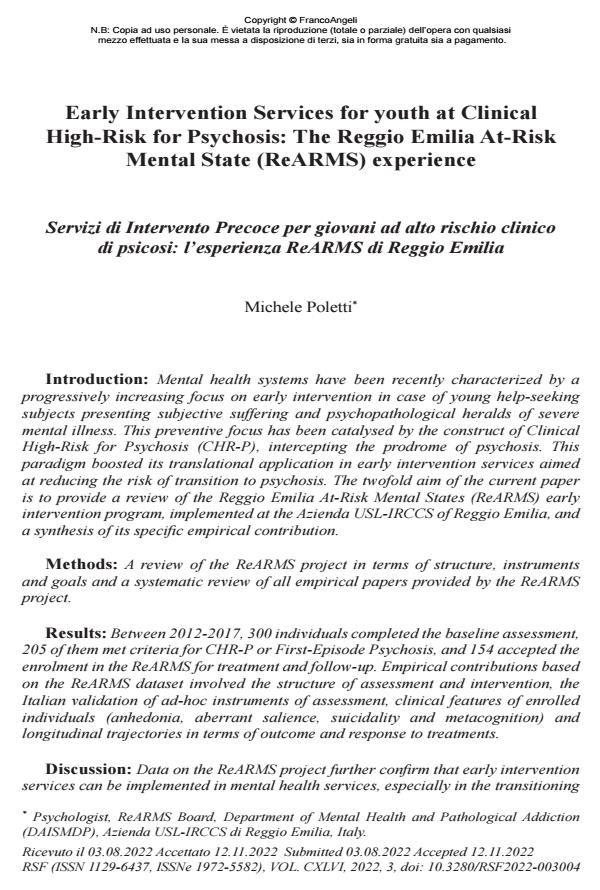Early Intervention Services for youth at Clinical High-Risk for Psychosis: The Reggio Emilia At-Risk Mental State (ReARMS) experience
Journal title RIVISTA SPERIMENTALE DI FRENIATRIA
Author/s Michele Poletti
Publishing Year 2022 Issue 2022/3
Language English Pages 20 P. 61-80 File size 187 KB
DOI 10.3280/RSF2022-003004
DOI is like a bar code for intellectual property: to have more infomation
click here
Below, you can see the article first page
If you want to buy this article in PDF format, you can do it, following the instructions to buy download credits

FrancoAngeli is member of Publishers International Linking Association, Inc (PILA), a not-for-profit association which run the CrossRef service enabling links to and from online scholarly content.
Between 2012-2017, 300 individuals completed the baseline assessment, 205 of them met criteria for CHR-P or First-Episode Psychosis, and 154 accepted the enrolment in the ReARMS for treatment and follow-up. Empirical contributions based on the ReARMS dataset involved the structure of assessment and intervention, the Italian validation of ad-hoc instruments of assessment, clinical features of enrolled individuals (anhedonia, aberrant salience, suicidality and metacognition) and longitudinal trajectories in terms of outcome and response to treatments. age between adolescence and young adulthood, being effective in intercepting an early and usually enduring psychopathological suffering, independently from the transition to psychosis. Rather than being rigidly focused on homotypic trajectories from CHR-P to psychosis, increasing evidence on heterotypic trajectories starting from CHR-P to multiple psychopathological outcomes suggest to update early intervention services toward increased organizational flexibility, for example in therapeutic options.
Keywords: Clinical High-Risk for Psychosis; Early Intervention Services; Reggio Emilia At-Risk Mental State (ReARMS); Progetto Regionale Esordi Psicotici (PREP).
Michele Poletti, Early Intervention Services for youth at Clinical High-Risk for Psychosis: The Reggio Emilia At-Risk Mental State (ReARMS) experience in "RIVISTA SPERIMENTALE DI FRENIATRIA" 3/2022, pp 61-80, DOI: 10.3280/RSF2022-003004